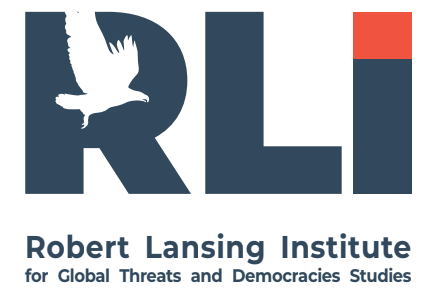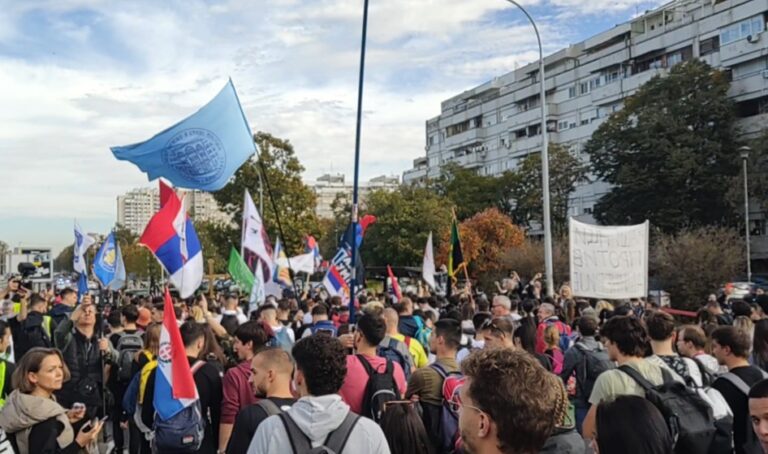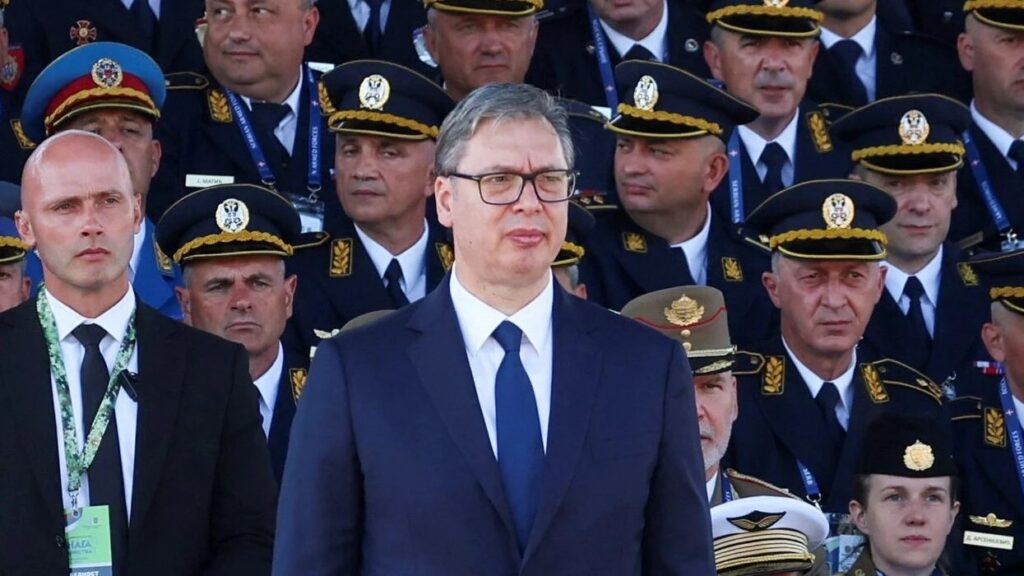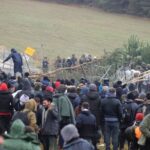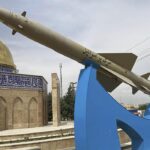Serbia one year after the student uprising: November 1 protest set to shake the regime
In November 2024, mass protests erupted in Novi Sad after a tent collapsed at the city’s railway station, killing sixteen people, including two children, and seriously injuring one. Citizens saw the tragedy as a symbol of the corruption and state negligence that had long gripped public institutions. Within weeks, civic anger spread across the country. By March 2025, protests had engulfed over 400 cities and towns in Serbia. What began as local grief and revolt transformed into the largest civic movement in Serbia’s post-war history, exposing the structural weaknesses of Aleksandar Vučić’s regime and its deep legitimacy crisis.
The student and citizen protests, initially focused on justice for the Novi Sad victims, quickly took on broader political dimensions. They became a revolt against a system defined by corruption, controlled media, and police violence. For the first time, the young Serbian generation raised under propaganda promoting false stability, took to the streets without fear. Images of students confronting police and demanding “Srbija bez straha” (Serbia without fear) became a symbol of a society seeking dignity and real change. Vučić revealed the true face of the system. The government’s response was brutal. Hundreds of arrests, police violence documented by human rights organizations, and a media campaign branding protesters as “putschists” or “foreign agents.” It became evident that Vučić’s regime operates not on democratic legitimacy but through fear and manipulation of public perception.
Attack near the Parliament, a symptom of the Government’s fear or an orchestrated scenario
The incident on October 22 near the Serbian Parliament, where shots were fired and a fire broke out in the tents of a group calling itself “Students Who Want to Study,” has raised more questions than answers. These students, government supporters, had been stationed near the Parliament for weeks to defend Vučić and oppose the large student protests sweeping the country. Authorities claim the fire was caused by a former BIA agent, fueling suspicions that the incident may have been staged.
There are suspicions that the event could have been orchestrated by power structures to create controlled chaos and shift the public narrative ahead of the protests, which are expected to peak on November 1. The fact that the attack targeted Vučić supporters, combined with the suspected perpetrator’s alleged links to the secret services, strengthens the hypothesis that this was a politically simulated incidentalso serving as a pretext for stricter security measures against opposition protesters.
Viewed in this light, the “attack” near Parliament seems less a real act of violence by opponents and more part of the regime’s propaganda arsenal. By framing it as a “terrorist attack,” Vučić aims to mobilize public opinion in defense of the state and portray himself as a figure of order amid “street chaos.” This strategy is familiar: creating artificial crises to justify repression and undermine democratic protests. If these suspicions are confirmed, the October 22 incident not only signals the government’s fear but also demonstrates its willingness to instrumentalize violence, even against its own supporters to maintain political survival.
On the other hand, a year later, protesters’ demands remain unchanged. Justice for the victims, accountability for state corruption, and an end to unlimited presidential power. Despite violence against protesters and attacks from violent groups, civil society today is more organized, the opposition more courageous, and international support for civic movements more vocal than ever.
Violence against protesters follows a familiar pattern used by the regime to intimidate citizens and undermine the perception of protest as a democratic act. Evidence suggests that attackers are linked to extremist groups and security segments traditionally operating in the orbit of power. Informal control through parallel structures as hooligans, nationalist groups, and pseudo-patriotic organizations, has long been a pillar of Vučić’s stability. Yet today, their use has the opposite effect, it portrays a state gripped by violence and controlled chaos.
As tensions are rising, the regime’s rhetoric is hardening, and the opposition is discussing mass mobilization, for the first time, there is genuine fear that Serbia could face open civil clashes in November in Novi Sad, organized by the student movement “Student u blokadi.” Full details of the rally location have not yet been released, but organizers have encouraged citizens and activists from across Serbia to gather in Novi Sad. They have also distributed guidelines for logistical and financial support and have organized marches from other cities on foot, in honor of the victims.
While major developments are expected, there are three possible scenarios that Vučić could use to overcome the crisis:
The scenario of escalating violence and open repression: If the regime chooses to suppress the protest by force, Serbia could enter a dangerous cycle of clashes. Violence against citizens would provoke strong international reactions and could lead to political isolation. The EU and the US would likely impose new conditions on relations with Belgrade. Yet Vučić may hope that fear will overcome anger, repeating a strategy that has worked for him in the past.
The scenario of political manipulation through media control: The government could use its propaganda apparatus to symbolically quell the protest, portraying it as a failure or part of a “foreign plan for destabilization.” This would involve limited police intervention, selective arrests, and a media offensive designed to sow public confusion. Essentially, it would maintain artificial stability while the regime reorganizes.
The scenario of tactical concessions and internal crisis: Faced with growing international pressure and domestic discontent, Vučić could take tactical steps: call early elections, replace ministers, or create the impression of reform. This would allow him to regain control by changing the facade without altering the core of the system. This is the most likely scenario, as it enables the regime to maintain power while simulating democracy.
Simultaneously with these events, international pressure has intensified. The latest European Parliament resolution marks a significant shift in the EU’s approach to Serbia. For the first time, MEPs openly referenced the “systematic deterioration of the democratic situation” and called for an independent investigation into violence against protesters. This is a direct blow to Vučić, who has long built his international legitimacy on the image of a “stabilizer of the region.” Pressure is not limited to Brussels. After the Banjska incident on the Kosovo border and the deterioration of relations with NATO, Washington now questions Serbia’s reliability as a regional actor. The United States has signaled that Vučić cannot simultaneously act as a Western partner and a Moscow ally.
In this context, any violence on November 1 will put Belgrade on a collision course with the West, with serious consequences for European integration and the Serbian economy, which relies heavily on Western investment. For the first time, signs of fatigue are emerging even within the ruling party. Economic elites who have benefited from Vučić’s rule are considering gradual distancing, while some security officials express skepticism about using force against citizens. If the November 1 protests gather a significant number of citizens from different strata, students, workers, teachers, and intellectuals a broad movement could emerge, potentially destabilizing the architecture of fear underpinning the regime.
But will Vučić resign? In the short term, his resignation is unlikely. Aleksandar Vučić has built his political career on perpetual crisis; whenever politically cornered, he creates a new emergency to breathe politically. Yet, for the first time, he faces triple pressure: from society, the international community, and internal power structures.
If the November 1 protest becomes a symbolic moment of civic unity, it could mark the beginning of the end of the Vučić era, not necessarily through immediate resignation, but through a gradual erosion of authority and political control. History shows that authoritarian regimes do not fall overnight; they crumble slowly, as fear diminishes and society begins to believe that change is possible.
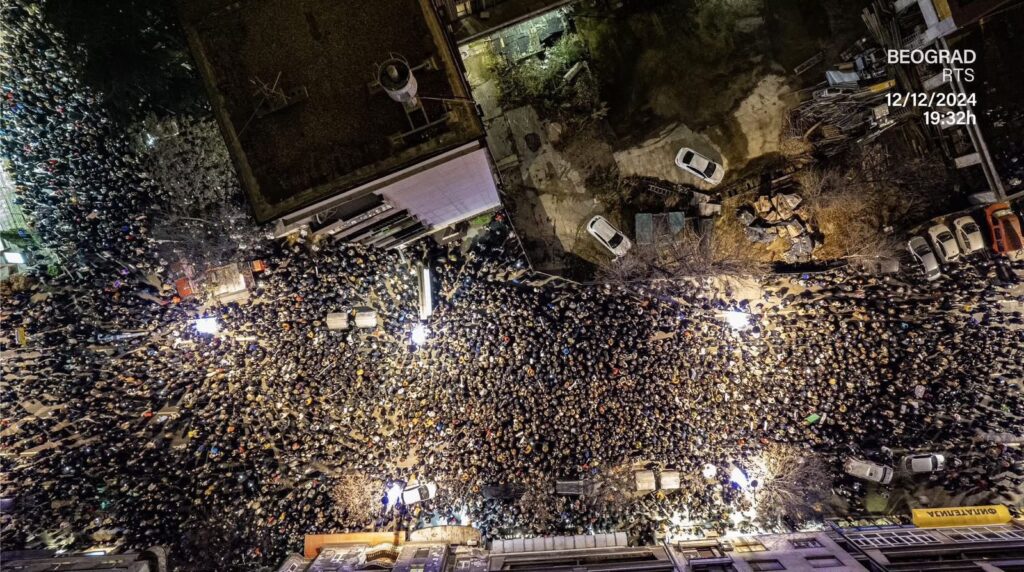
More on this story: The Cost of Corruption: Protests in Serbia and the Push for Change”
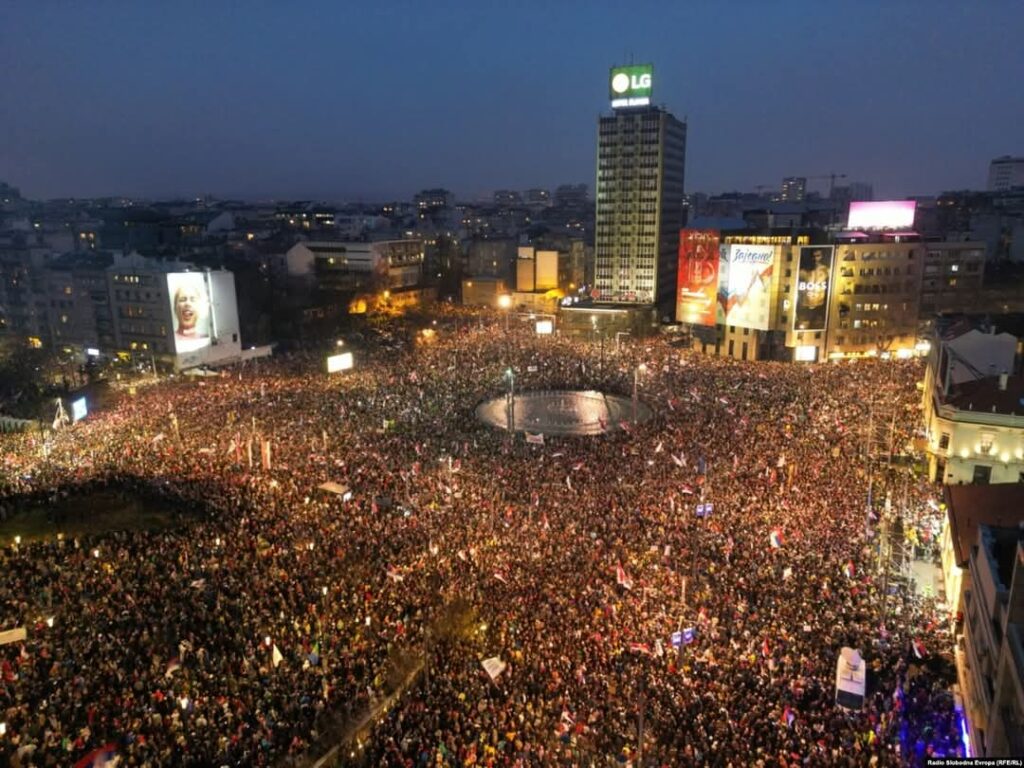
More on this story: Vucic will not resign He will try painful scenarios
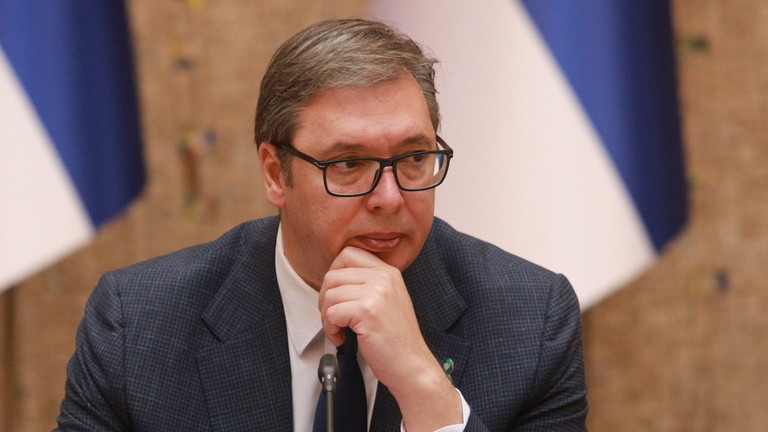
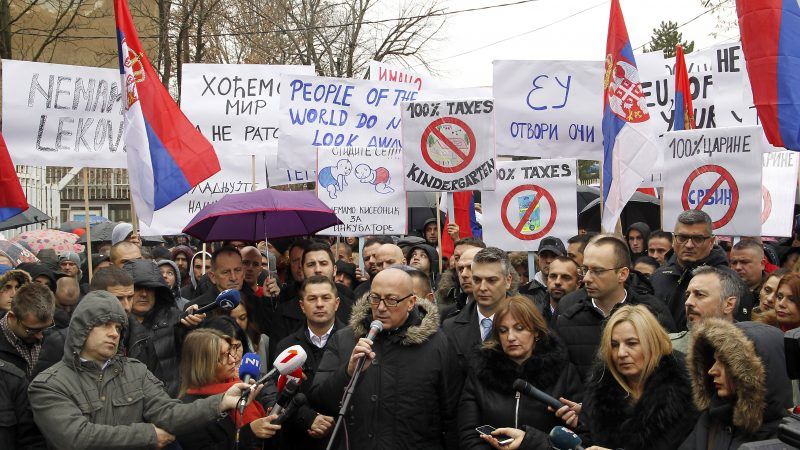
More on this story: Protests in Serbia: Descendance Into Chaos or an Orchestration of Chaos?
